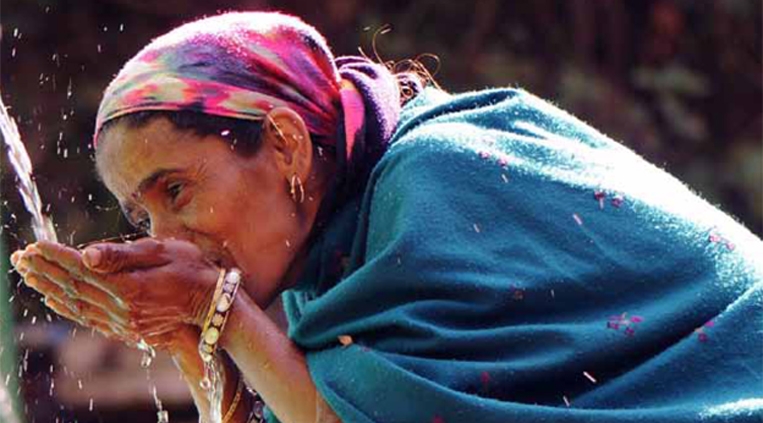SUMMARY
India has invested almost $2.5 billion each year to improve water supply for over 700 million rural people, making it the largest such program in the world. Most rural water supply and sanitation systems in existence today have been designed and implemented by state-run agencies in a top-down manner with a focus on building infrastructure. Not surprisingly, government data show that 96 percent of the rural population has been ‘covered’ with a tap or a well within a reasonable distance from their home.
In practice, however, many rural water supply systems are no longer functional. Maintenance has been neglected, water sources have dried up, the quality of water has deteriorated, or systems have long outlived their use. Consumers have also treated water as a right to be provided free-of-cost by the government, rendering their water supply systems both financially and environmentally unsustainable. As a result, the promised minimum of at least 4 buckets of water per person per day does not often reach the people.
In 1999, India sought to decentralize the delivery of rural water supply and sanitation services. Communities would now choose the service they wanted and were willing to pay for, and plan, construct and maintain their own systems. The government’s role would change from being a ‘water service provider’ to a ‘facilitator’.
Uttarakhand has now become the first state in India to implement this decentralized approach in both letter and spirit across its entire territory. In keeping with the 73rd amendment of the constitution, it has transferred the control of ‘funds, functions and functionaries’ to the lowest rung of the local governance infrastructure, the Gram Panchayats.
By March 2013, over 5,000 habitations had built their own water supply systems, benefitting some half a million rural residents, with support from the World Bank’s Uttarakhand Rural Water Supply and Sanitation Project. Strong community involvement has reduced the cost of the schemes, curbed the leakage of funds, and led to huge savings for the state exchequer. Women, who have traditionally borne the brunt of fetching water, have been involved at all stages.
Catchment areas have been protected to recharge springs and maintain water quality. Given the state’s mainly hilly terrain, most schemes are gravity-based piped systems that bring 24/7 water supply to rural homes without using power. Communities have increased their capacity to plan and implement works, equipping them to take on other development projects in future.
The project has twice received the Uttarakhand Government’s Right to Information (RTI) award for transparency and good governance. The Government of India’s National Rural Drinking Water Program has mandated that other states follow similar policies and practices.

